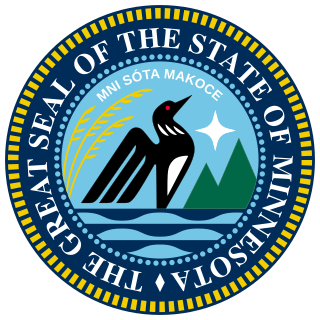
The governor of Minnesota is the head of government of the U.S. state of Minnesota, leading the state's executive branch. Forty people have been governor of Minnesota, though historically there were also three governors of Minnesota Territory. Alexander Ramsey, the first territorial governor, also served as state governor several years later. State governors are elected to office by popular vote, but territorial governors were appointed to the office by the United States president. The current governor of Minnesota is Tim Walz of the Democratic-Farmer-Labor Party (DFL), affiliated with the national Democratic Party.

Michelle Louise Helene Fischbach is an American attorney and politician who is the U.S. representative from Minnesota's 7th congressional district. The district, which is very rural, is Minnesota's largest by area and includes most of the western part of the state. A Republican, Fischbach served as the 49th lieutenant governor of Minnesota from 2018 until 2019. As of 2025, she is the last Republican to have held statewide office in Minnesota.

The 1888 Minnesota gubernatorial election was held on November 6, 1888 to elect the governor of Minnesota.

The 1886 Minnesota gubernatorial election was held on November 2, 1886 to elect the governor of Minnesota.

The 1883 Minnesota gubernatorial election was held on November 6, 1883, to elect the governor of Minnesota.

The 1881 Minnesota gubernatorial election was held on November 8, 1881, to elect the governor of Minnesota.

The 1879 Minnesota gubernatorial election was held on November 4, 1879, to elect the governor of Minnesota. Incumbent John S. Pillsbury was reelected to a third term.

The 1877 Minnesota gubernatorial election was held on November 6, 1877 to elect the governor of Minnesota. Incumbent John S. Pillsbury was reelected to a second term.

The 1875 Minnesota gubernatorial election was held on November 2, 1875, to elect the governor of Minnesota.

The 1873 Minnesota gubernatorial election was held on November 4, 1873, to elect the governor of Minnesota.
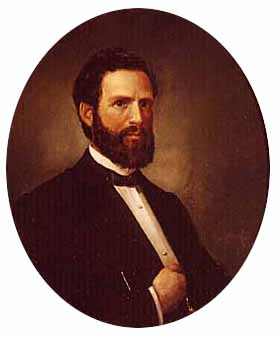
The 1869 Minnesota gubernatorial election was held on November 2, 1869, to elect the governor of Minnesota.

The 1867 Minnesota gubernatorial election was held on November 5, 1867, to elect the governor of Minnesota. Incumbent governor William Rainey Marshall was reelected to a second term.

The 1865 Minnesota gubernatorial election was held on November 7, 1865, to elect the governor of Minnesota.
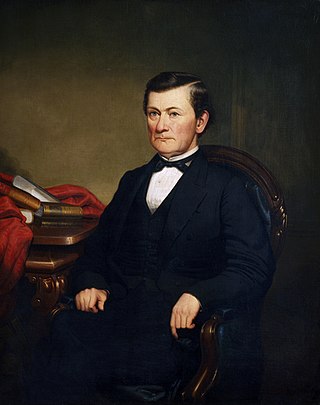
The 1863 Minnesota gubernatorial election was held on July 10, 1863, to elect the governor of Minnesota.

The 1861 Minnesota gubernatorial election was held on November 5, 1861, to elect the governor of Minnesota. Incumbent Alexander Ramsey was reelected to a second term.
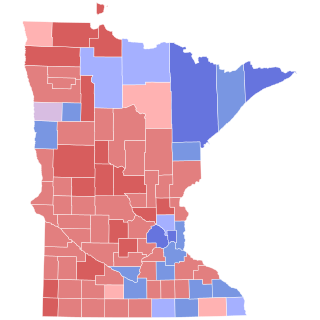
The 2018 Minnesota gubernatorial election took place on November 6, to elect the 41st Governor of Minnesota as incumbent Democratic (DFL) Governor Mark Dayton chose not to run for re-election for a third term. The Democratic nominee was U.S. Representative Tim Walz from Minnesota's 1st congressional district while the Republican Party nominated Hennepin County commissioner Jeff Johnson for a second consecutive time. The Independence Party of Minnesota did not field a candidate for the first time since 1994. Going into the election polls showed Walz ahead; the race was characterized as lean or likely DFL.
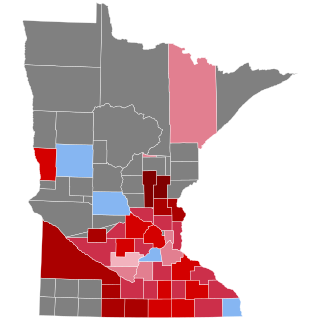
The 1860 United States presidential election in Minnesota took place on November 6, 1860, as part of the 1860 United States presidential election. Minnesota voters chose four representatives, or electors, to the Electoral College, who voted for president and vice president.

The thirteenth Minnesota Legislature first convened on January 3, 1871. The 11 members of the Minnesota Senate who represented odd-numbered districts were chosen in the General Election of November 2, 1869, while the 11 members of the Minnesota Senate who represented even-numbered districts, and the 47 members of the Minnesota House of Representatives, were chosen in the General Election of November 8, 1870.

The 1864 United States presidential election in Minnesota took place on November 8, 1864, as part of the 1864 United States presidential election. State voters chose four representatives, or electors, to the Electoral College, who voted for president and vice president.

The 2022 Minnesota gubernatorial election took place on November 8, 2022, to elect the governor of Minnesota. Incumbent Democratic (DFL) Governor Tim Walz defeated the Republican nominee, former state senator Scott Jensen, winning a second term.






















